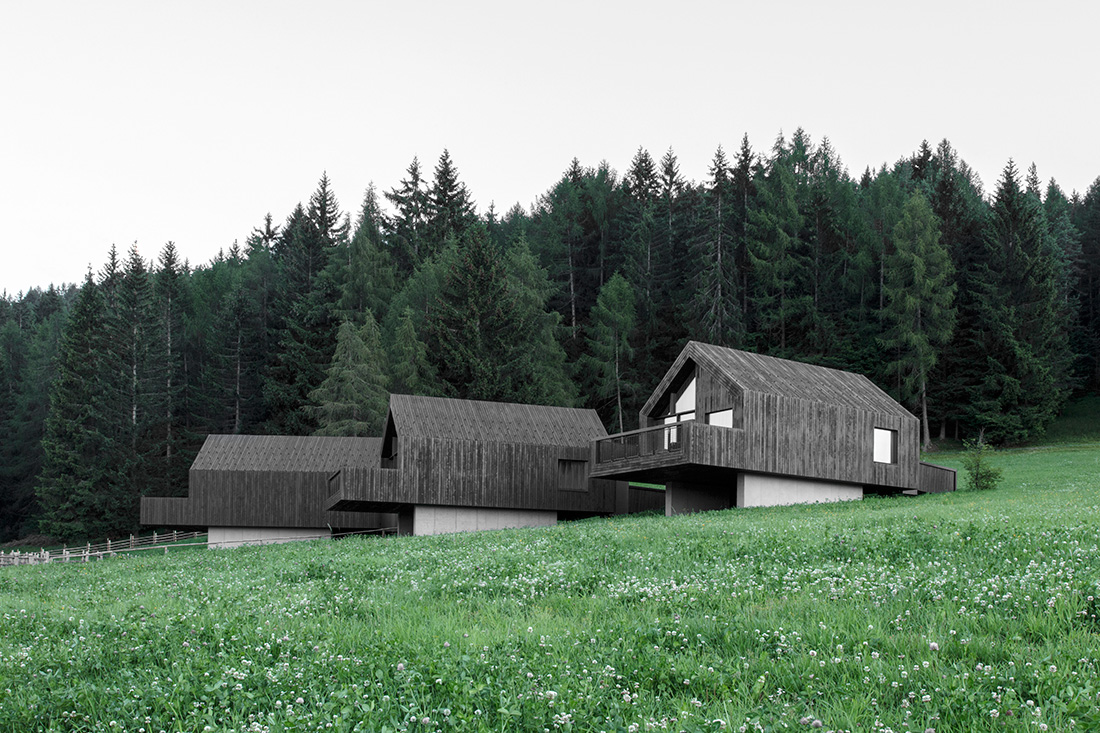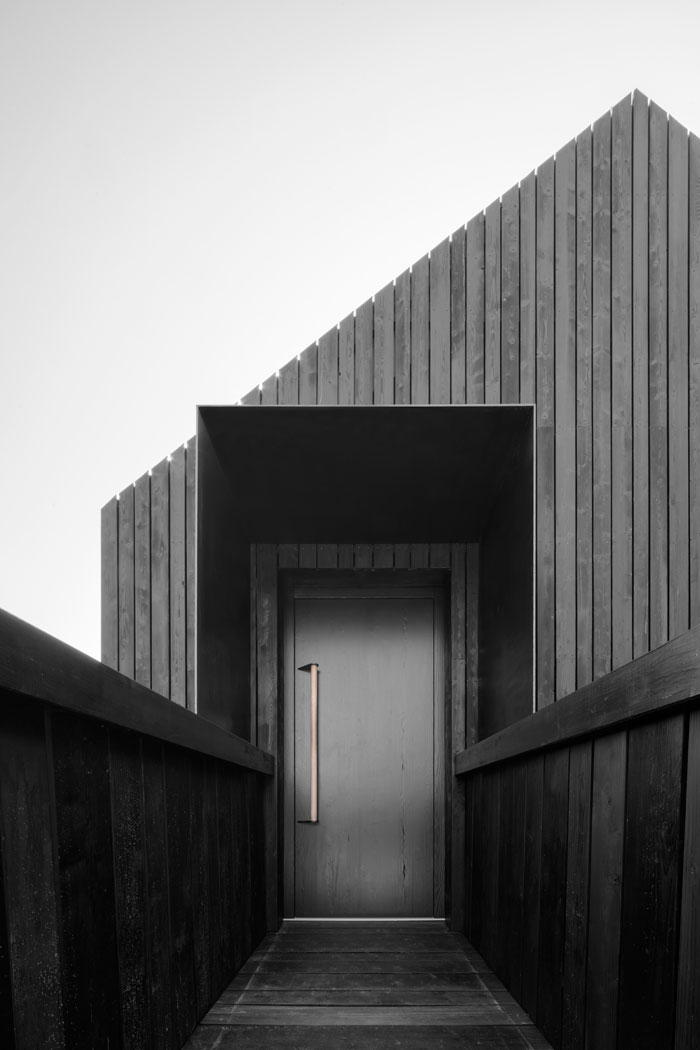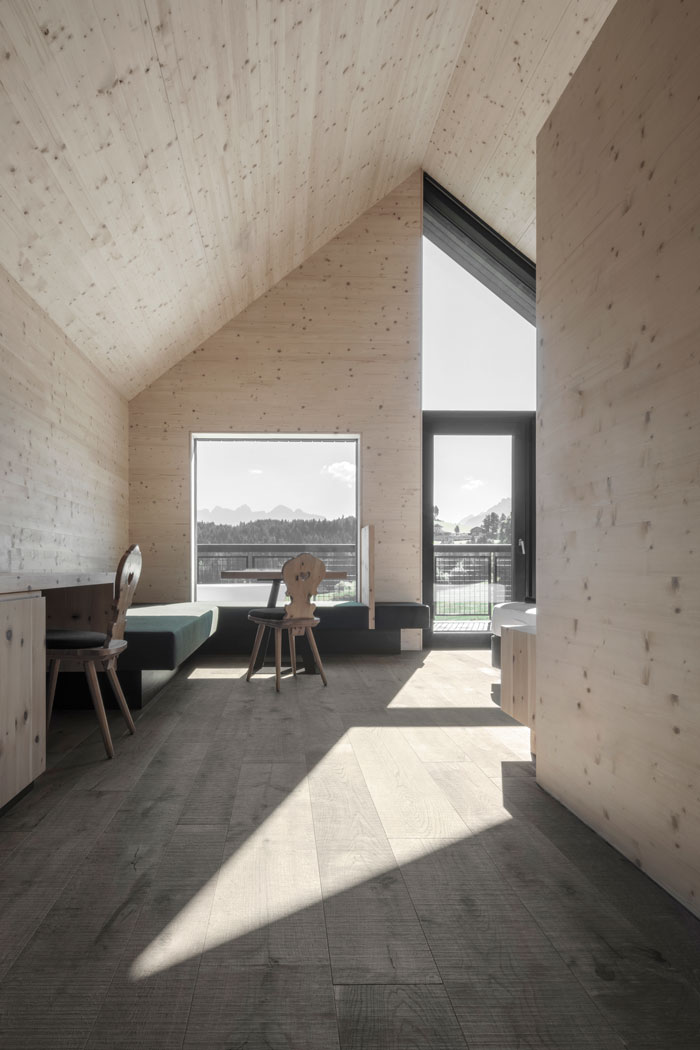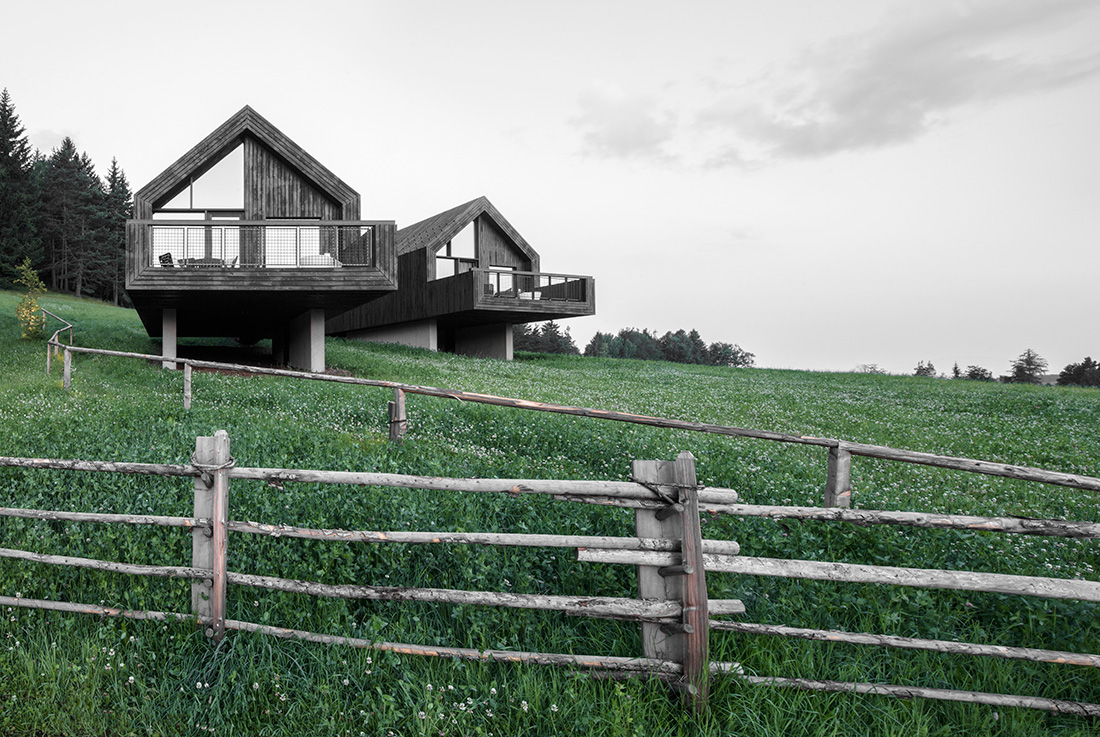
3 houses form an ensemble, are and act as three compositions and fan out into the landscape. the planar shifting of the surface creates directions and axes, directions of existing mountain peaks. the horizontal shifting causes the different elevation in the height layers and thus also the different perspectives of the three composition. at the foot of the forest, each positioned on concrete slabs, floating above the topography, above the landscape that flows underneath. the wooden gabled houses seem to become one with the forest because of their dark colour, they integrate itselfs into it. the landscape itself flows below and in between. in addition in the background the tree existence, the forest, encloses and takes them up. the dark colour completes the desired impression. the buildings form one unit. they play with spaces, position and mutual proportion. the black-brown laths continue the facade over the roof, giving it a monotonous, floating character. the large cantilevered terrace is integrated and allows the inside to merge with the outside. the houses are accessed by means of a wooden bridge and a covered entrance. in the interior, the shape of the roof remains perceptible and can be experienced. is possible to notice the wall and roof development. the roof spikes give form and proportion. noticeable both outside and inside and through the white glazed spruce wood. the tip strengthens again the axis in the roof and the fan-like shape. the buildings grow out of the landscape and allow the landscape to flow through in between. the buildings are interdependent and reinforce each other in form, distance and positioning. structures that enter into relationship are connected by their appearance, like a unit and stand individually by themselves.
What makes this project one-of-a-kind?
the small wooden constructions are supported by concrete partitions in order to allow the separation from the ground. these small volumes transmit lightness and through dark wood tending almost to black, they blend into the backdrop of the forest. the use of local
materials contributes to make a building more “natural”, integrating the work with the territory, favouring the development of an intervention that spontaneously arises from the ground. this is an architecture in harmony with the place, an architecture that weaves natural and artificial elements, an architecture that accompanies the landscape and integrates with it.






About authors

Bergmeisterwolf is a design and architecture studio based in Brixen and Rosenheim that offers answers to contextual and spatial requests through an intense dialogue with its clients and the academic research. The studio was established by Gerd Bergmeister and Michaela Wolf who work in close collaboration with architects, artists and a network of professionals from different fields. Bergmeisterwolf works include architecture and interior design in hospitality, residential, cultural and commercial buildings, both private and public at different scales.
FILE
authors: Bergmeisterwolf
Client: hotel Pfösl
Photos: Gustav Willeit
Location: Deutschnofen, Italy
Year of completion: 2017
Total area (m2): 132
Text provided by the authors of the project.



